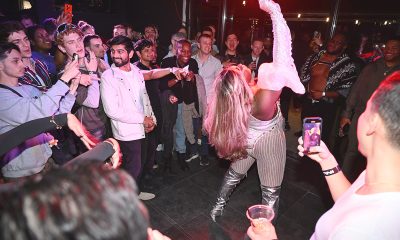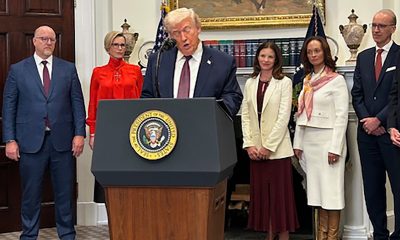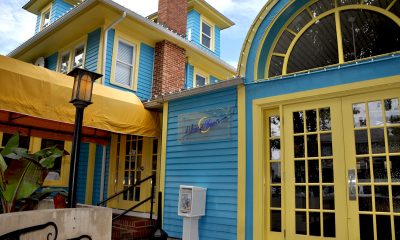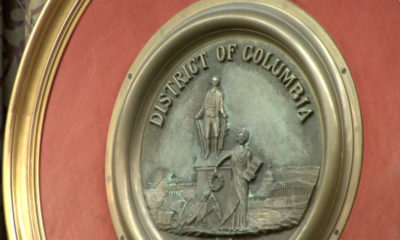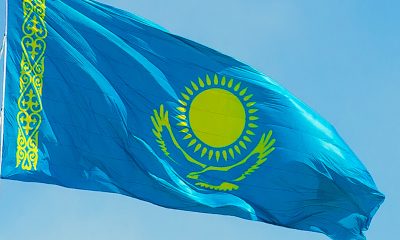National
Local, national events to mark 35th annual World AIDS Day
Advocates say stigma remains key obstacle to ending the epidemic
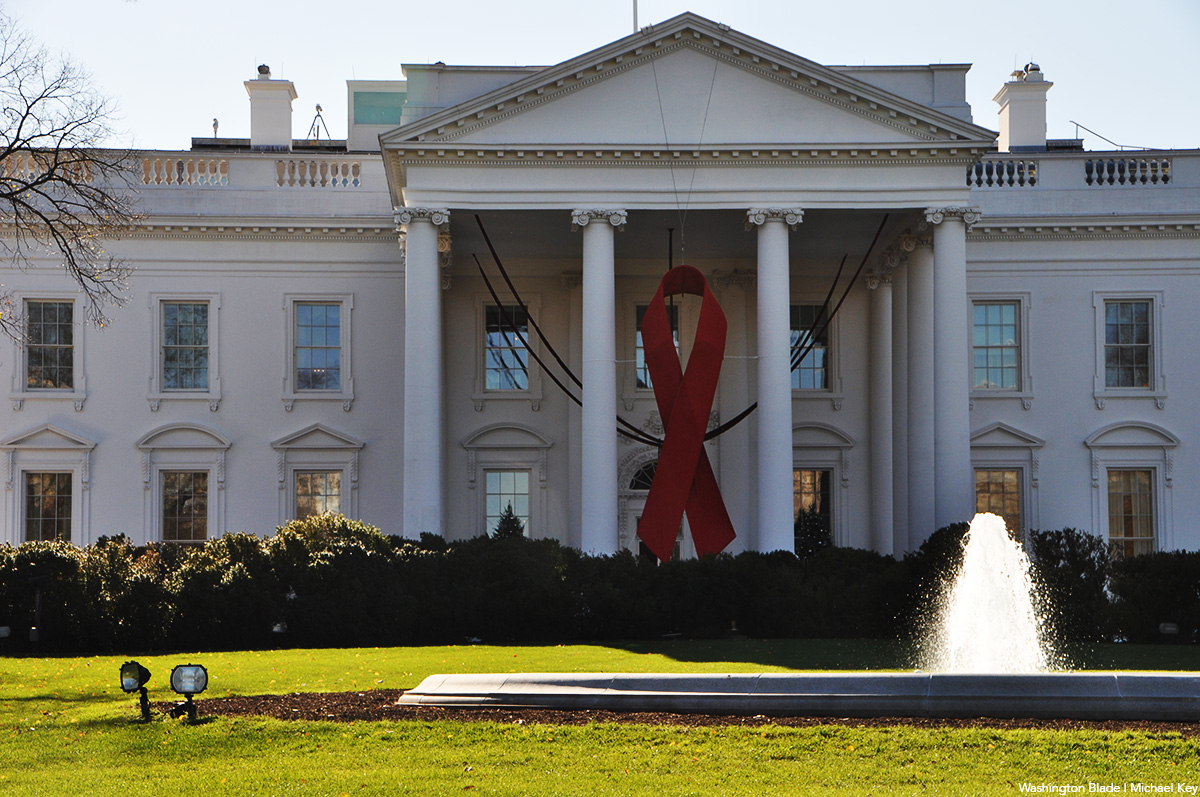
UNAIDS dubbed this year’s World AIDS Day theme as “Let Communities Lead.” This is how conversations around HIV and AIDS should be structured, Duante’ Brown said, who manages two programs at NMAC — a nonprofit dedicated to working to end the AIDS epidemic. People living with HIV need to be considered the subject matter experts, he said.
“Bringing those people into the room, showing them that they have a voice and that there’s not just this group of people who are making a decision for them … is definitely the way that you go about this.”
Brown manages the ESCALATE program at NMAC, which aims to empower people to address HIV stigma, and the ELEVATE program, which is a training program for people with HIV to be more involved in the planning and delivery of the Ryan White HIV/AIDS Program, which is the largest federal program designed specifically for people with HIV.
In the United States, it’s estimated 1.2 million people are living with HIV, according to HIV.gov. About 13% are unaware they have HIV.
HIV also continues to disproportionately affect certain populations. Men who have sex with men accounted for 70% of the 32,100 estimated new HIV infections in 2021. And Black individuals accounted for 40% of the new infections that year, while only comprising 12% of the population of the United States, according to the CDC.
In 2023, stigma is a key inhibitor to ending the epidemic, Brown said. When stigma gets out of the way, there could be a day when there are no new cases of HIV transmissions, he said. To get around that stigma, people need to have meaningful and productive conversations about AIDS.
“Not treating it as taboo, making sure that we are empowering people living with HIV and AIDS to tell their stories and to be empowered to feel that it’s OK,” Brown said. “And that nothing is wrong with you.”
And there are several events in the region to recognize World AIDS Day, many of them aimed at abolishing the stigma that comes with talking about HIV.
World AIDS Day events

Whitman-Walker is hosting two events around World AIDS Day this year. There is the World AIDS Day Cabaret on Dec. 1, which is a 70-minute performance of “The Shadow of Her Smile” by Ann Talman. Talman starred alongside Elizabeth Taylor, a legendary AIDS advocate, on Broadway and locally at the Kennedy Center.
The show highlights Taylor’s advocacy for those with AIDS. She established the Elizabeth Taylor AIDS Foundation in 1991 to raise funds and awareness to fight the spread.
The show will be at The Corner at Whitman-Walker. Doors open at 7 p.m., and the $50 admission includes a complimentary cocktail.
Whitman-Walker is also hosting its Annual Walk to End HIV on Dec. 2. The 37th annual walk will begin at Anacostia Riverwalk Trail. This year, the walk celebrates the new Whitman-Walker location in Anacostia Park – the Max Robinson Center.
“We’re continuing this new tradition of hosting the walk east of the river as a way to really remind the community that there is a pillar of support care and resources to a very historically undervalued and underserved portion of Washington, D.C.,” said Dwight Venson, the external affairs and community coordinator at Whitman-Walker.
The warm-up begins at 8:45 a.m., and the walk kicks off at 9 a.m. Venson noted there is no need or pressure to fundraise — the goal is for people to come out and march.
More details on both events are available on Whitman-Walker’s website. The organization also provides HIV testing across D.C., and more details are available on its website.
At a national level, Janet Jackson is set to headline the World AIDS Day concert on Dec. 1 — an annual fundraiser sponsored by the AIDS Healthcare Foundation. The concert will be at the NRG Arena in Houston, and will also honor actor and activist Blair Underwood with its lifetime achievement award.
“[The concert] really is a way to commemorate World AIDS Day in a way that is both remembrance of those that we’ve lost, recognizing where we’re at, but also really celebrating and connecting the work that’s yet to be done. And having folks still leaving uplifted and elevated about what the future could hold,” said Imara Canady, AHF’s national director for communications and community engagement.
Jackson has long been an outspoken advocate for people living with HIV. Her song, “Together Again,” is a tribute to a friend she lost to AIDS, as well as a dedication to patients around the world.
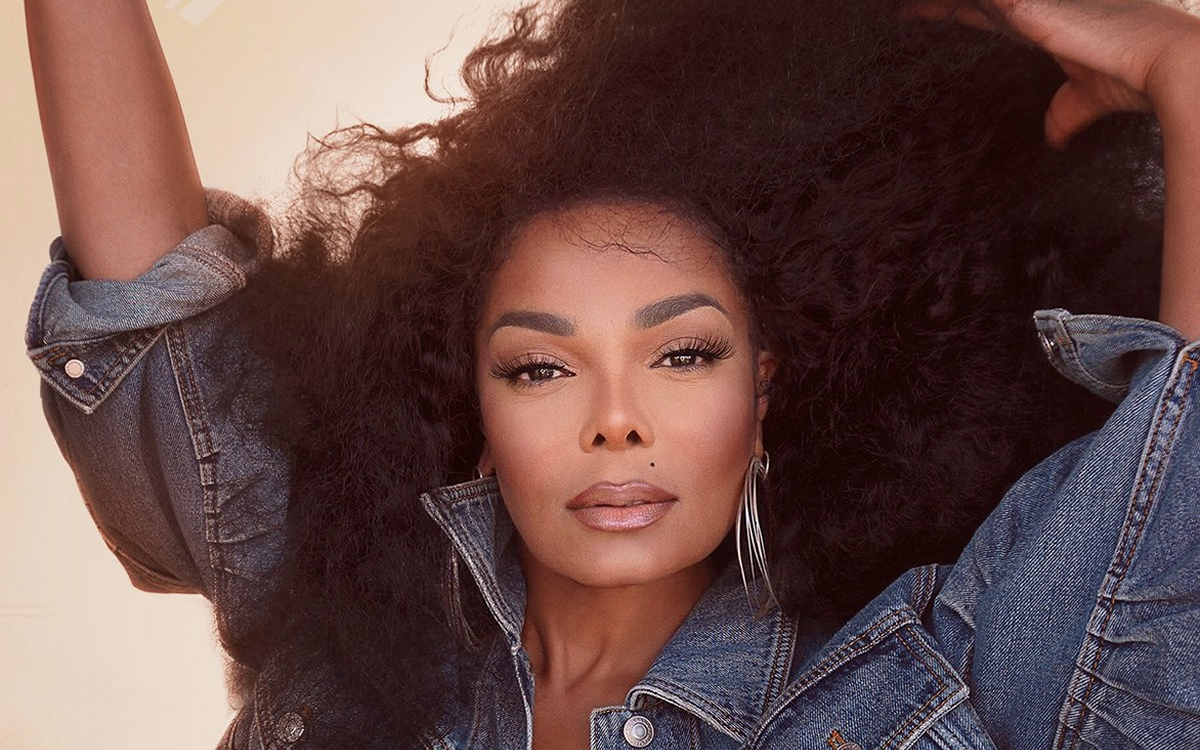
The AIDS Healthcare Foundation, the largest nonprofit HIV/AIDS service organization and advocacy group, has several health care centers in D.C., Maryland and Virginia, and many across the nation and world.
Mike McVicker-Weaver, the regional director for the D.C. and Baltimore area for AHF, said the local region has a robust network of providers to address HIV in the area, which is something to be proud of.
“I see a lot of collective effort on strategizing, to bring an end to the epidemic,” McVicker-Weaver said.
AHF also has a free HIV test locater online at freehivtest.net.
CAMP Rehoboth is hosting a World AIDS Day non-denominational service on Dec. 1. Attendees will walk from CAMP Rehoboth to All Saints’ Church on Olive Avenue at 5:30 p.m., and the service will begin at 6 p.m.
The service will feature the names of local people who have died of AIDS, and there will be performances by members of the CAMP Rehoboth Chorus. Attendees can also create a painted rock expressing their feelings about AIDS, loss and hope, which can be placed at the Peace Pole on CAMP Rehoboth grounds.
There will be a display of a portion of the AIDS Quilt for viewing at All Saints’ Church. There are also viewing opportunities on Dec. 2 and Dec. 3. More details about the service are available on CAMP Rehoboth’s website.
CAMP Rehoboth recently expanded its HIV testing program, CAMPsafe, to offer daily free testing.
“It’s our work here to commit to making a better future where those cases are less,” said Matty Brown, the communications manager at CAMP Rehoboth. “We just want to make sure that there’s ample room for plenty of testing opportunities.”
Visual AIDS, an organization using art to raise AIDS awareness, is hosting a screening of five videos about connections between HIV and other forms of illness and disability. “Everyone I Know Is Sick” is on Dec. 1 at 6 p.m., and more details are available on Eventbrite.
D.C. Health is hosting a World AIDS Day Celebration on Nov. 30. There will be live performances, and the event is free. More details are available on Eventbrite.
The DC Alumnae Chapter of Delta Sigma Theta is organizing a celebration and community HIV screening on Dec. 1 at Skyland Town Center. It’s an outdoor event, and attendees are encouraged to bring a chair and dress comfortably. More details are available on Eventbrite.
Daydream Sunshine Initiative is hosting an event with free screenings and a clothing closet in Mount Rainier, Md., on Dec. 1. More details are available on Eventbrite.
There is a World AIDS Day community celebration on Dec. 1 at Johns Hopkins, hosted by the nonprofit Begin Anew. The Baltimore city mayor and Savena Mushinge, Miss Maryland USA 2023, are expected to speak. More details are available on Eventbrite.
Montgomery County is hosting its third annual World AIDS Day Solidarity for Health Equity Breakfast at the Silver Spring Civic Building on Dec. 1. It will highlight HIV’s disproportionate impact on Black women in the county. More details are available on the Montgomery County government’s website.
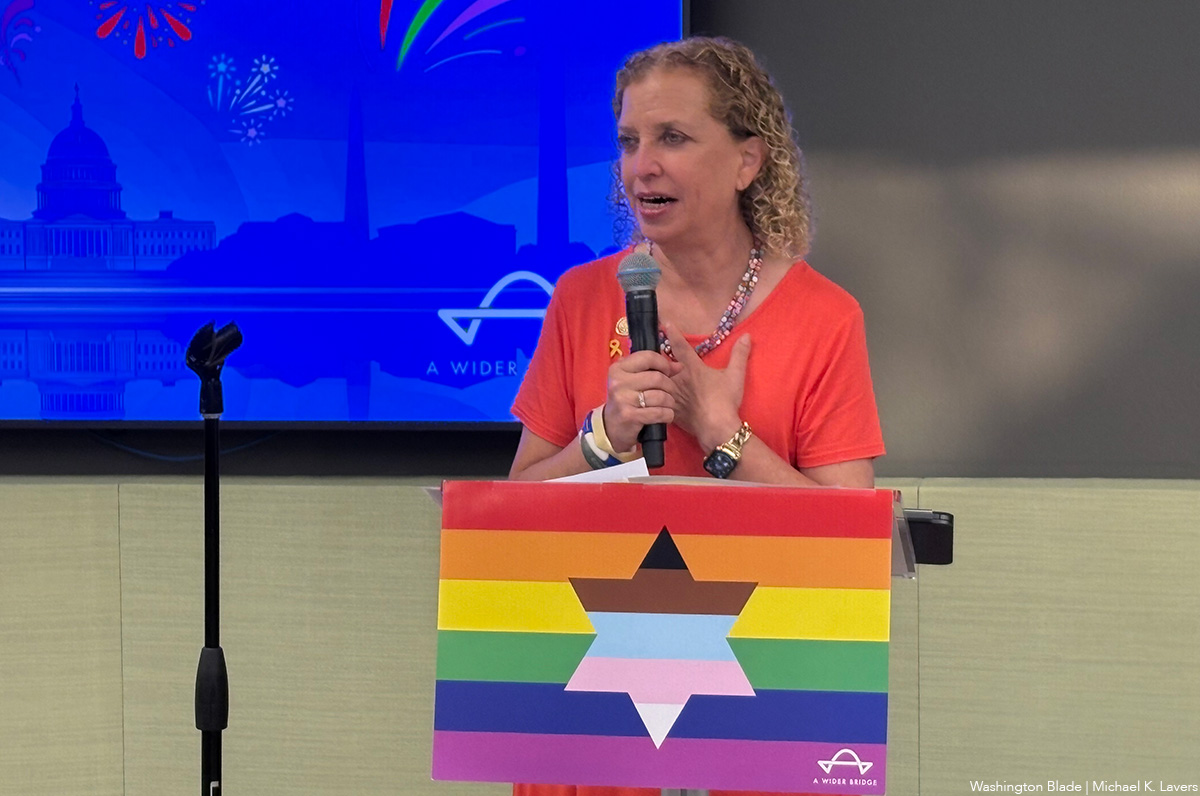
A Wider Bridge on Friday announced it will shut down at the end of the month.
The group that “mobilizes the LGBTQ community to fight antisemitism and support Israel and its LGBTQ community” in a letter to supporters said financial challenges prompted the decision.
“After 15 years of building bridges between LGBTQ communities in North America and Israel, A Wider Bridge has made the difficult decision to wind down operations as of Dec. 31, 2025,” it reads.
“This decision comes after challenging financial realities despite our best efforts to secure sustainable funding. We deeply appreciate our supporters and partners who made this work possible.”
Arthur Slepian founded A Wider Bridge in 2010.
The organization in 2016 organized a reception at the National LGBTQ Task Force’s Creating Change Conference in Chicago that was to have featured to Israeli activists. More than 200 people who protested against A Wider Bridge forced the event’s cancellation.
A Wider Bridge in 2024 urged the Capital Pride Alliance and other Pride organizers to ensure Jewish people can safely participate in their events in response to an increase in antisemitic attacks after Hamas militants attacked Israel on Oct. 7, 2023.
The Jewish Telegraphic Agency reported authorities in Vermont late last year charged Ethan Felson, who was A Wider Bridge’s then-executive director, with lewd and lascivious conduct after alleged sexual misconduct against a museum employee. Rabbi Denise Eger succeeded Felson as A Wider Bridge’s interim executive director.
A Wider Bridge in June honored U.S. Rep. Debbie Wasserman Schultz (D-Fla.) at its Pride event that took place at the Capital Jewish Museum in D.C. The event took place 15 days after a gunman killed two Israeli Embassy employees — Yaron Lischinsky and Sarah Milgrim — as they were leaving an event at the museum.
“Though we are winding down, this is not a time to back down. We recognize the deep importance of our mission and work amid attacks on Jewish people and LGBTQ people – and LGBTQ Jews at the intersection,” said A Wider Bridge in its letter. “Our board members remain committed to showing up in their individual capacities to represent queer Jews across diverse spaces — and we know our partners and supporters will continue to do the same.”
Editor’s note: Washington Blade International News Editor Michael K. Lavers traveled to Israel and Palestine with A Wider Bridge in 2016.
The White House
‘Trump Rx’ plan includes sharp cuts to HIV drug prices
President made announcement on Friday

President Donald Trump met with leaders from some of the world’s largest pharmaceutical companies at the White House on Friday to announce his new “Trump Rx” plan and outline efforts to reduce medication costs for Americans.
During the roughly 47-minute meeting in the Roosevelt Room, Trump detailed his administration’s efforts to cut prescription drug prices and make medications more affordable for U.S. patients.
“Starting next year, American drug prices will come down fast, furious, and will soon be among the lowest in the developed world,” Trump said during the meeting. “For decades, Americans have been forced to pay the highest prices in the world for prescription drugs by far … We will get the lowest price of anyone in the world.”
Trump signed an executive order in May directing his administration “to do everything in its power to slash prescription drug prices for Americans while getting other countries to pay more.”
“This represents the greatest victory for patient affordability in the history of American health care, by far, and every single American will benefit,” he added.
Several pharmaceutical executives stood behind the president during the announcement, including Sanofi CEO Paul Hudson, Novartis CEO Vas Narasimhan, Genentech CEO Ashley Magargee, Boehringer Ingelheim (USA) CEO Jean-Michel Boers, Gilead Sciences CEO Dan O’Day, Bristol Myers Squibb General Counsel Cari Gallman, GSK CEO Emma Walmsley, Merck CEO Robert Davis, and Amgen Executive Vice President Peter Griffith.
Also in attendance were Health and Human Services Secretary Robert F. Kennedy Jr., Commerce Secretary Howard Lutnick, Centers for Medicare and Medicaid Services Administrator Mehmet Oz, and Food and Drug Administration Commissioner Marty Makary.
Under the Trump Rx plan, the administration outlined a series of proposed drug price changes across multiple companies and therapeutic areas. Among them were reductions for Amgen’s cholesterol-lowering drug repatha from $573 to $239; Bristol Myers Squibb’s HIV medication reyataz from $1,449 to $217; Boehringer Ingelheim’s type 2 diabetes medication jentadueto from $525 to $55; Genentech’s flu medication xofluza from $168 to $50; and Gilead Sciences’ hepatitis C medication epclusa from $24,920 to $2,425.
Additional reductions included several GSK inhalers — such as the asthma inhaler advair diskus 500/50, from $265 to $89 — Merck’s diabetes medication januvia from $330 to $100, Novartis’ multiple sclerosis medication mayzent from $9,987 to $1,137, and Sanofi’s blood thinner plavix from $756 to $16. Sanofi insulin products would also be capped at $35 per month’s supply.
These prices, however, would only be available to patients who purchase medications directly through TrumpRx. According to the program’s website, TrumpRx “connects patients directly with the best prices, increasing transparency, and cutting out costly third-party markups.”
Kennedy spoke after Trump, thanking the president for efforts to lower pharmaceutical costs in the U.S., where evidence has shown that drug prices — including both brand-name and generic medications — are nearly 2.78 times higher than prices in comparable countries. According to the Pharmaceutical Research and Manufacturers of America, roughly half of every dollar spent on brand-name drugs goes to entities that play no role in their research, development, or manufacturing.
“This is affordability in action,” Kennedy said. “We are reversing that trend and making sure that Americans can afford to get the life-saving solutions.”
Gilead CEO Dan O’Day also spoke about how the restructuring of drug costs under TrumpRx, combined with emerging technologies, could help reduce HIV transmission — a virus that, if untreated, can progress to AIDS. The LGBTQ community remains disproportionately affected by HIV.
“Thank you, Mr. President — you and the administration,” O’Day said. “I think this objective of achieving the commitment to affordability and future innovation is extraordinary … We just recently launched a new medicine that’s only given twice a year to prevent HIV, and we’re working with Secretary Kennedy and his entire team, as well as the State Department, as a part of your strategy to support ending the epidemic during your term.
“I’ve never been more optimistic about the innovation that exists across these companies and the impact this could have on America’s health and economy,” he added.
Trump interjected, asking, “And that’s working well with HIV?”
“Yes,” O’Day replied.
“It’s a big event,” Trump said.
“It literally prevents HIV almost 100 percent given twice a year,” O’Day responded.
A similar anti-HIV medication is currently prescribed more than injectable form mentioned by O’Day. PrEP, is a medication regimen proven to significantly reduce HIV infection rates for people at high risk. Without insurance, brand-name Truvada can cost roughly $2,000 per month, while a generic version costs about $60 per month.
Even when medication prices are reduced, PrEP access carries additional costs, including clinic and laboratory fees, office visits, required HIV and sexually transmitted infection testing, adherence services and counseling, and outreach to potentially eligible patients and providers.
According to a 2022 study, the annual total cost per person for PrEP — including medication and required clinical and laboratory monitoring — is approximately $12,000 to $13,000 per year.
The TrumpRx federal platform website is now live at TrumpRx.gov, but the program is not slated to begin offering reduced drug prices until January.
The White House
EXCLUSIVE: Democracy Forward files FOIA lawsuit after HHS deadnames Rachel Levine
Trans former assistant health secretary’s name changed on official portrait

Democracy Forward, a national legal organization that works to advance democracy and social progress through litigation, policy and public education, and regulatory engagement, filed a lawsuit Friday in federal court seeking to compel the U.S. Department of Health and Human Services to release information related to the alteration of former Assistant Secretary for Health Adm. Rachel Levine’s official portrait caption.
The lawsuit comes in response to the slow pace of HHS’s handling of multiple Freedom of Information Act requests — requests that federal law requires agencies to respond to within 20 working days. While responses can take longer due to backlogs, high request volumes, or the need for extensive searches or consultations, Democracy Forward says HHS has failed to provide any substantive response.
Democracy Forward’s four unanswered FOIA requests, and the subsequent lawsuit against HHS, come days after someone in the Trump-Vance administration changed Levine’s official portrait in the Hubert H. Humphrey Building to display her deadname — the name she used before transitioning and has not used since 2011.
According to Democracy Forward, HHS “refused to release any records related to its morally wrong and offensive effort to alter former Assistant Secretary for Health Admiral Rachel Levine’s official portrait caption.” Levine was the highest-ranking openly transgender government official in U.S. history and served as assistant secretary for health and as an admiral in the U.S. Public Health Service Commissioned Corps from 2021 to 2025.
Democracy Forward President Skye Perryman spoke about the need to hold the Trump-Vance administration accountable for every official action, especially those that harm some of the most targeted Americans, including trans people.
“The question every American should be asking remains: what is the Trump-Vance administration hiding? For an administration that touts its anti-transgender animus and behavior so publicly, its stonewalling and silence when it comes to the people’s right to see public records about who was behind this decision is deafening,” Perryman said.
“The government’s obligation of transparency doesn’t disappear because the information sought relates to a trailblazing former federal official who is transgender. It’s not complicated — the public is entitled to know who is making decisions — especially decisions that seek to alter facts and reality, erase the identity of a person, and affect the nation’s commitment to civil rights and human dignity.”
“HHS’s refusal to respond to these lawful requests raises more serious concerns about transparency and accountability,” Perryman added. “The public has every right to demand answers — to know who is behind this hateful act — and we are going to court to get them.”
The lawsuit also raises questions about whether the alteration violated federal accuracy and privacy requirements governing Levine’s name, and whether the agency improperly classified the change as an “excepted activity” during a lapse in appropriations. By failing to make any determination or produce any records, Democracy Forward argues, HHS has violated its obligations under federal law.
The case, Democracy Forward Foundation v. U.S. Department of Health and Human Services, was filed in the U.S. District Court for the District of Columbia. The legal team includes Anisha Hindocha, Daniel McGrath, and Robin Thurston.
The Washington Blade reached out to HHS, but has not received any comment.
The lawsuit and four FOIA requests are below:
-

 Opinions5 days ago
Opinions5 days ago2026 elections will bring major changes to D.C. government
-

 Kazakhstan5 days ago
Kazakhstan5 days agoKazakh Senate approves anti-LGBTQ propaganda bill
-

 District of Columbia4 days ago
District of Columbia4 days agoNew queer bar Rush beset by troubles; liquor license suspended
-

 Letter-to-the-Editor4 days ago
Letter-to-the-Editor4 days agoCandidates should pledge to nominate LGBTQ judge to Supreme Court

